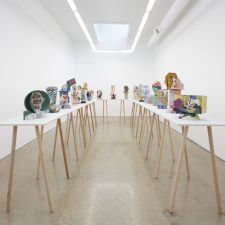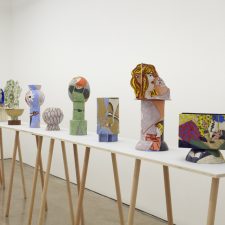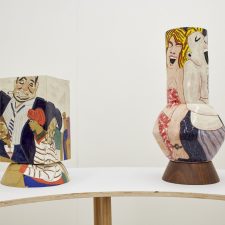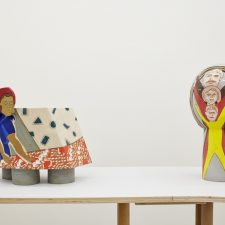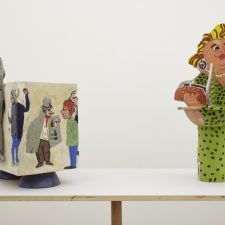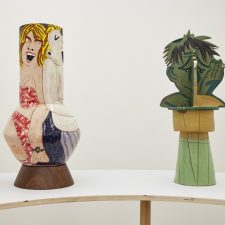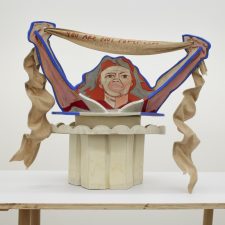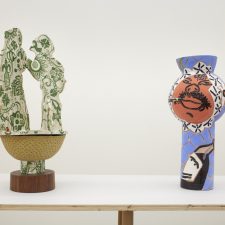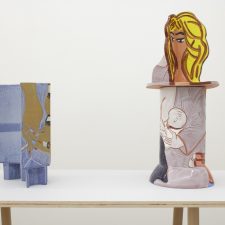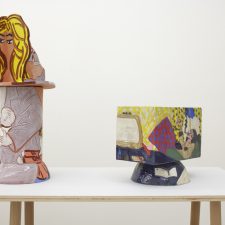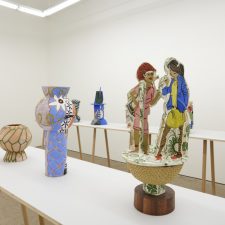
Nino Mier Gallery is pleased to present Los Angeles-based artist Bari Ziperstein’s first solo show at the gallery, Propaganda Pots, opening January 20 and on view until March 3, 2018. With an installation of over twenty-five new figurative ceramic sculptures on view, Ziperstein’s work references 1980’s propaganda posters from former Eastern Bloc countries adapted onto the surfaces of table top stoneware sculptures. Utilizing posters about domestic morality, alcoholism, motherhood and the
place of women in society, Ziperstein’s adaptation of these flat materials into three dimensional objects frames a distinct feminist gesture. In offering the propaganda a new tactile presence, she problematizes the relationship between craft, the home and femininity silhouetted against the context of a historical lineage of societal control and repression.
Bari Ziperstein has worked across a variety of mediums for close to two decades, often letting the context of the presentation determine the methods by which she produces and executes bodies of work. Critiquing forms of consumerism, domesticity and, especially, societal proscriptions of women’s roles, Ziperstein engages with formal vernaculars that sustain and perpetuate distinct social narratives within society. Most recently, she has been working with the Los Angeles-based Wende Museum and its Cold War-era collection of artifacts from Eastern European countries to find a selection of 80’s Russian propaganda materials that specifically engage with the role of women as well as morality and proper social mores. These undeniably sexist posters relegate women, their bodies and their personal enjoyment subordinate to that of the paternalistic state.
Depictions of babies addicted to alcohol, uniform wearing female textile factory workers, or spendthrift wives wasting away a family’s resources, are common motifs among the body of propaganda adapted into Ziperstein’s sculptures on view. The artist takes these depictions and carves them onto hand built clay surfaces and uses various glaze techniques for sharp contrasts of surfaces onto varying shapes resembling classic vessels, enlarged perfume bottles and architectural pedestals with an uncannily figurative form and presence. As three dimensional objects with planes of illustrative narratives, the original propaganda is a slow read in this new form and it gains an appealing presence of inventive use of color, shape and material, contrasting against their underlying, parochial message narrowly limiting women’s position in society. This tension between content and form, and the intersection between material and immaterial, is precisely the space in which Ziperstein’s gesture operates. Her identification of situations that are both alluring and repellant, without clear resolution or moral hierarchy, problematizes and subverts the notion of proscriptive roles determined by gender and sex. Through using the ideological detritus of regimes long past to history, she nonetheless re-vitalizes Cold War era propaganda within the context of ongoing repression and inequity that women face in contemporary society.
